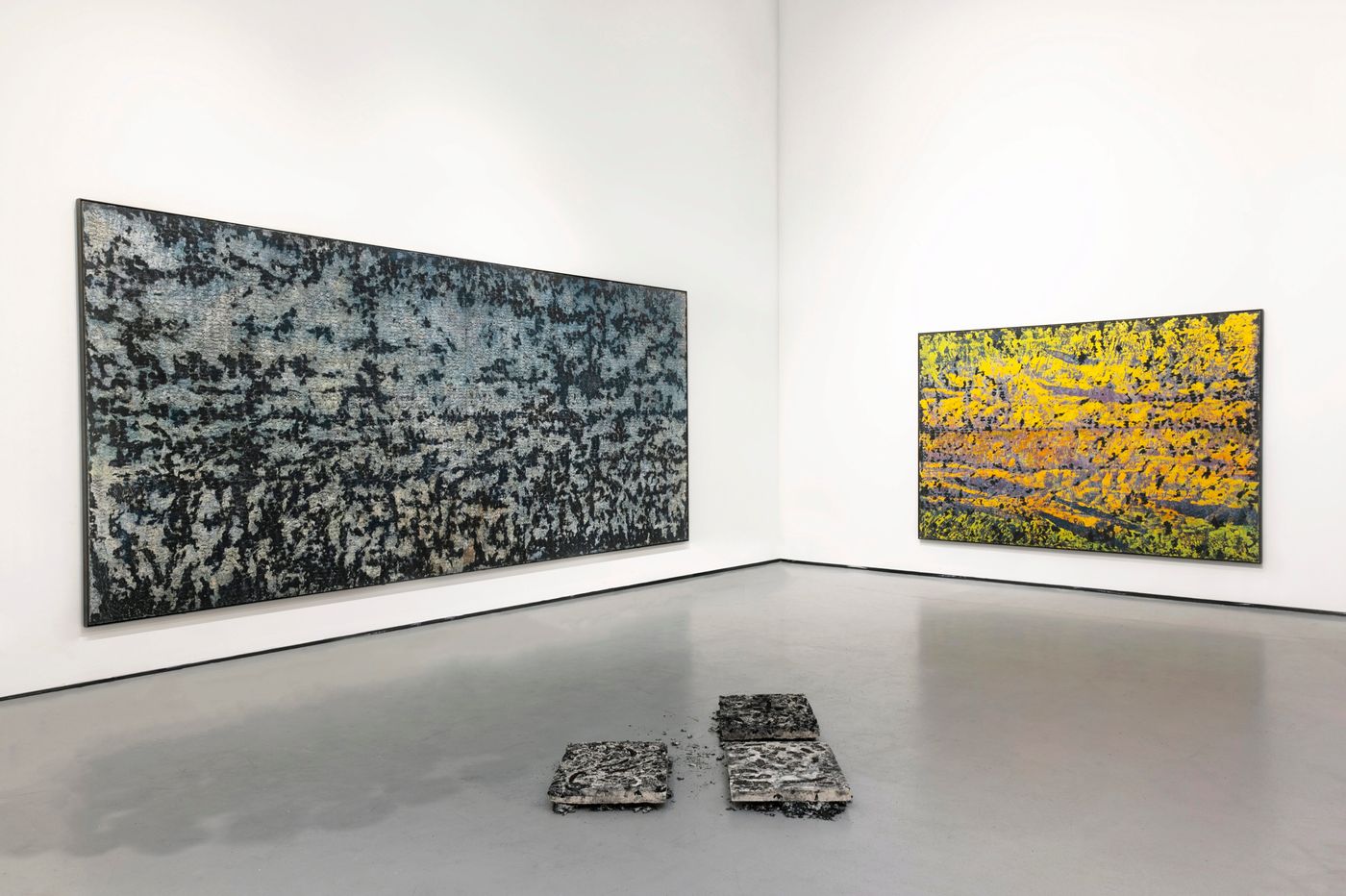
left to right: To the Cycles of Frost and Thaw, Dawn, Fossil I,II,&III, 2021-2022. Photo: Allison Minto.
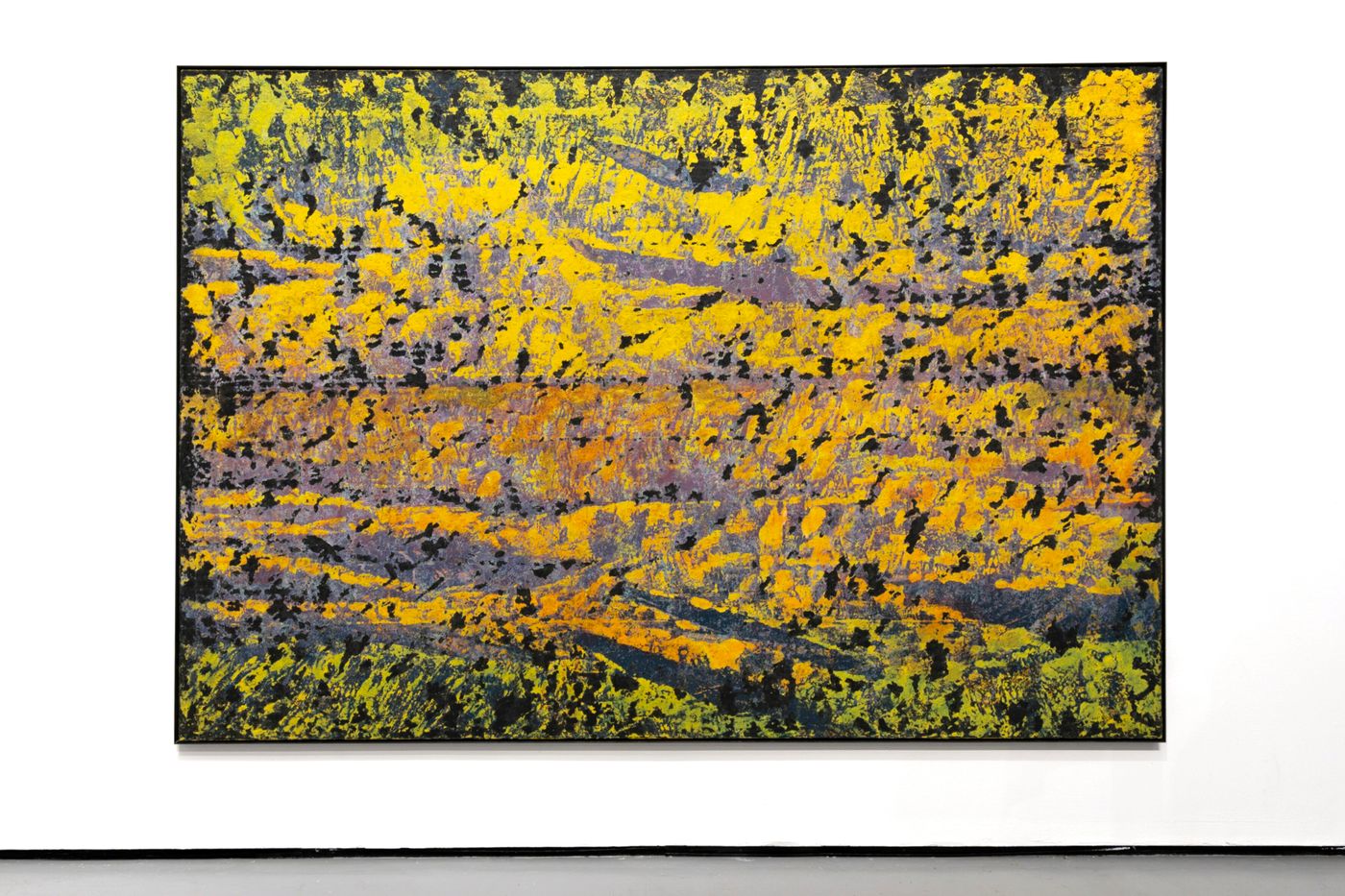
Dawn, 2021-2022. Oil and calcium carbonate on canvas with steel frame; 118 x 81 in. Photo courtesy the artist.
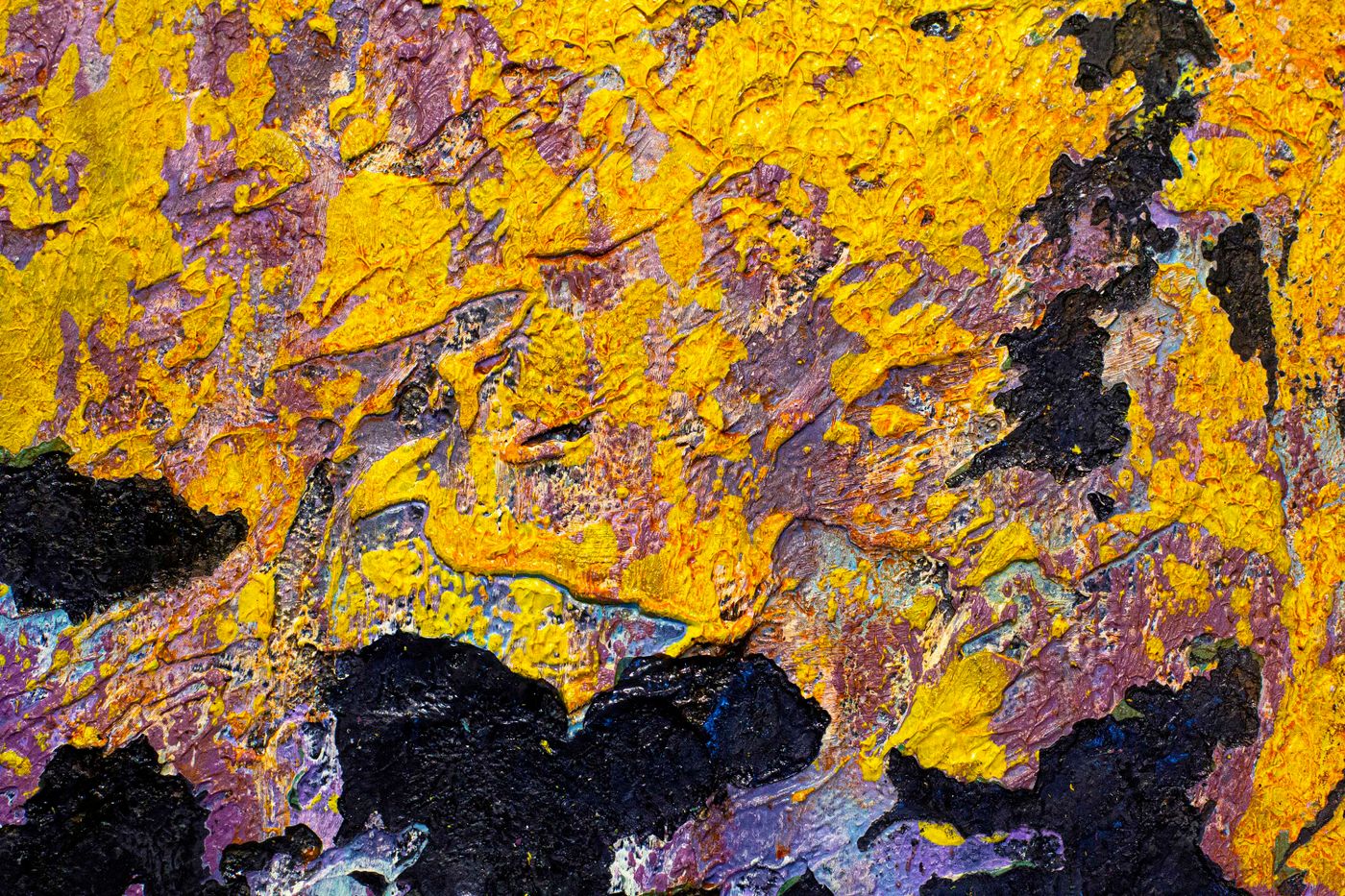
Dawn, 2021-2022. Oil and calcium carbonate on canvas with steel frame; 118 x 81 in. Photo courtesy the artist.
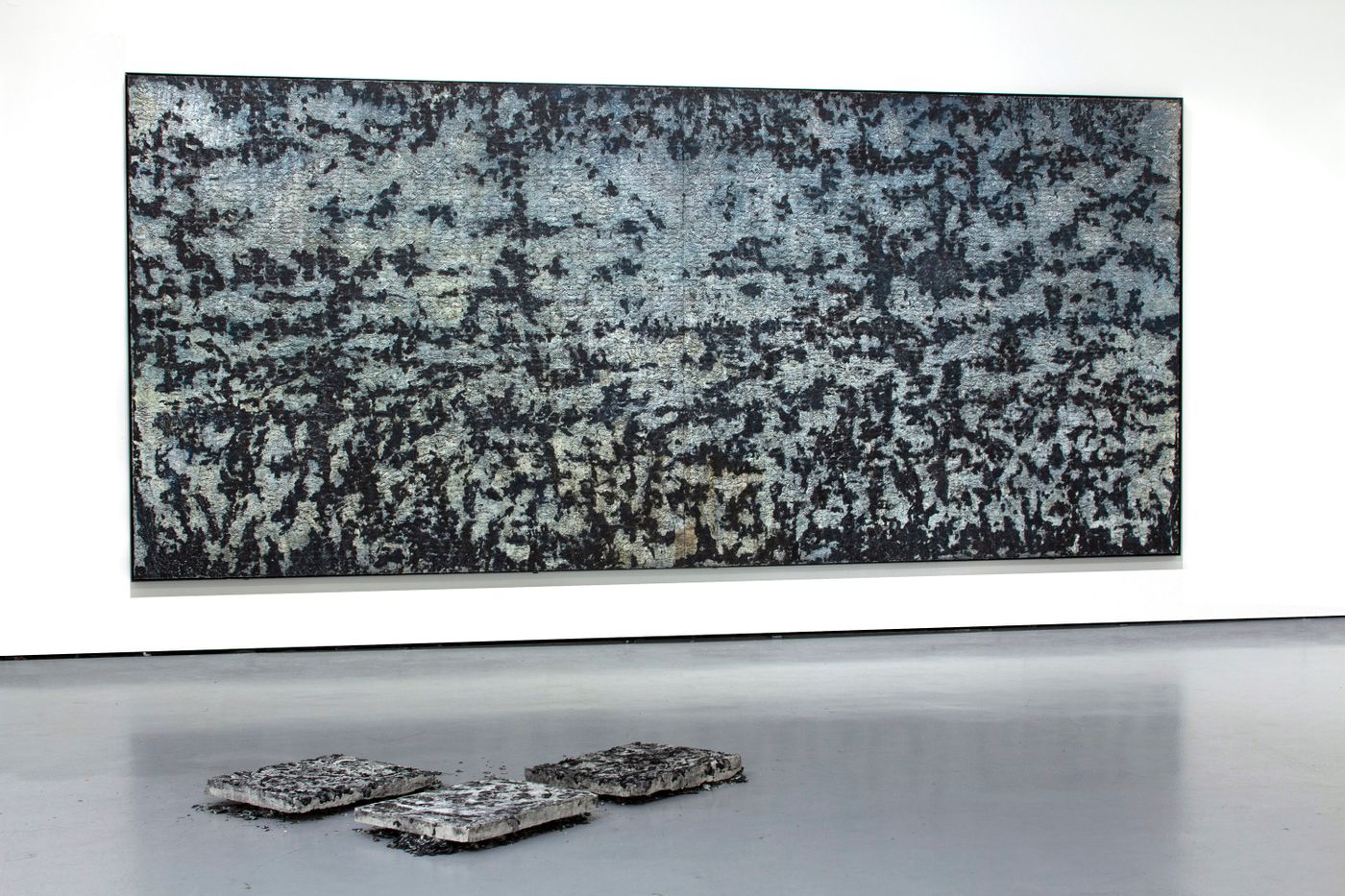
To the Cycles of Frost and Thaw, Fossil I, II, & III. Photo: Allison Minto.
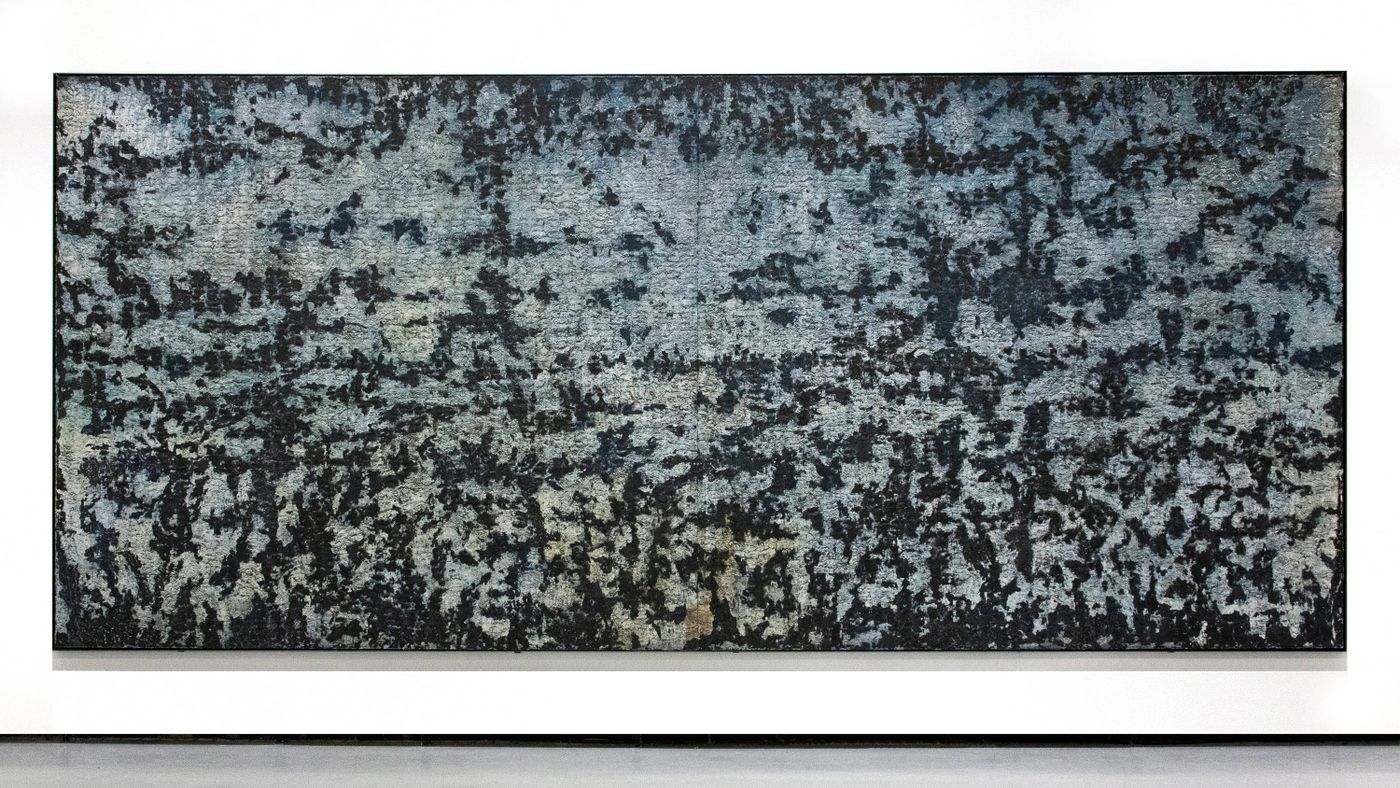
To the Cycles of Frost and Thaw, 2021-2022. Oil, calcium carbonate, graphite, polymer, silver nitrate, and ferrous oxalate on canvas with steel frame; 217 x 97 in. Photo: Allison Minto.
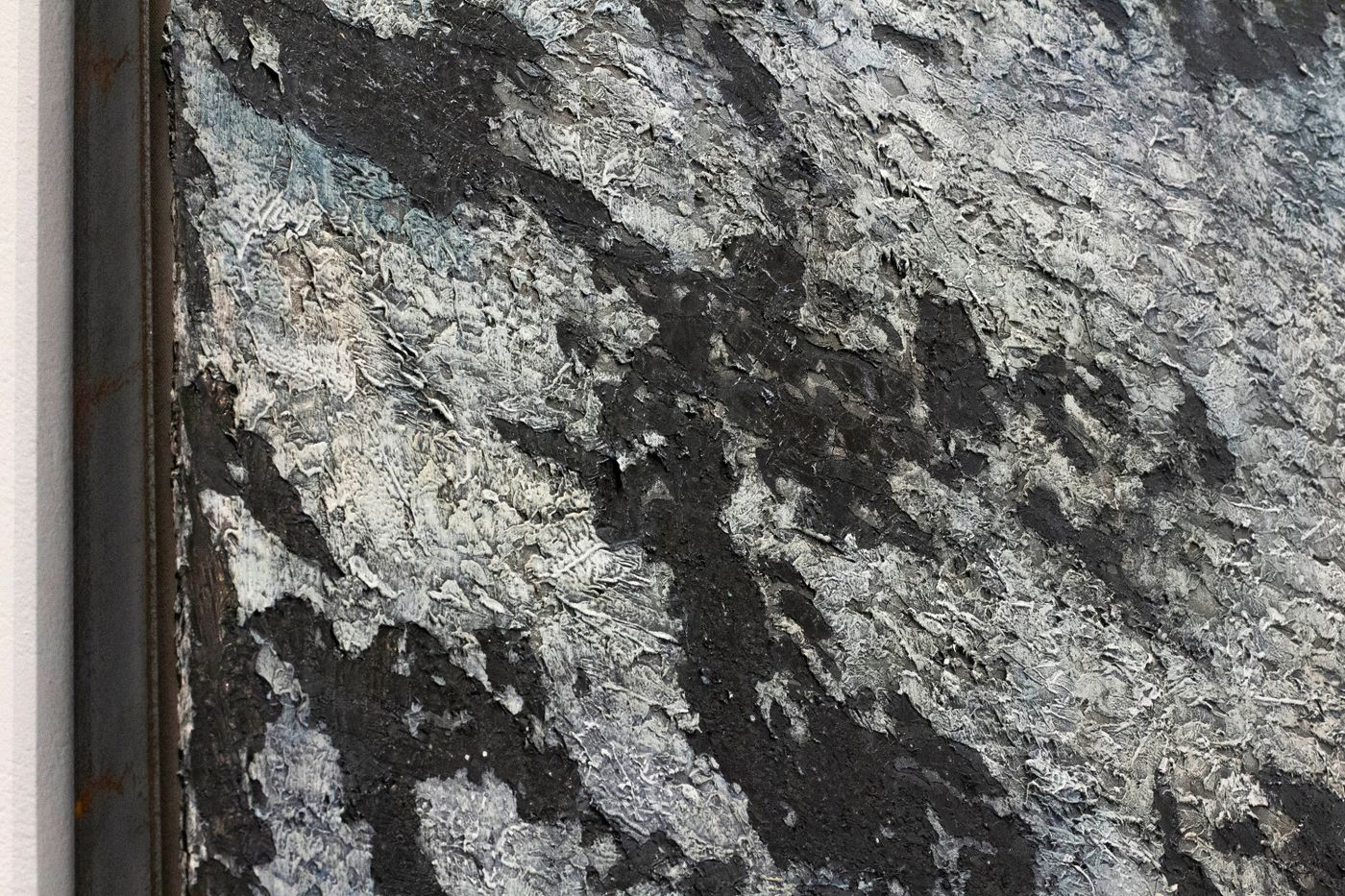
To the Cycles of Frost and Thaw (detail), 2021-2022. Oil, calcium carbonate, graphite, polymer, silver nitrate, and ferrous oxalate on canvas with steel frame; 217 x 97 in. Photo courtesy the artist.
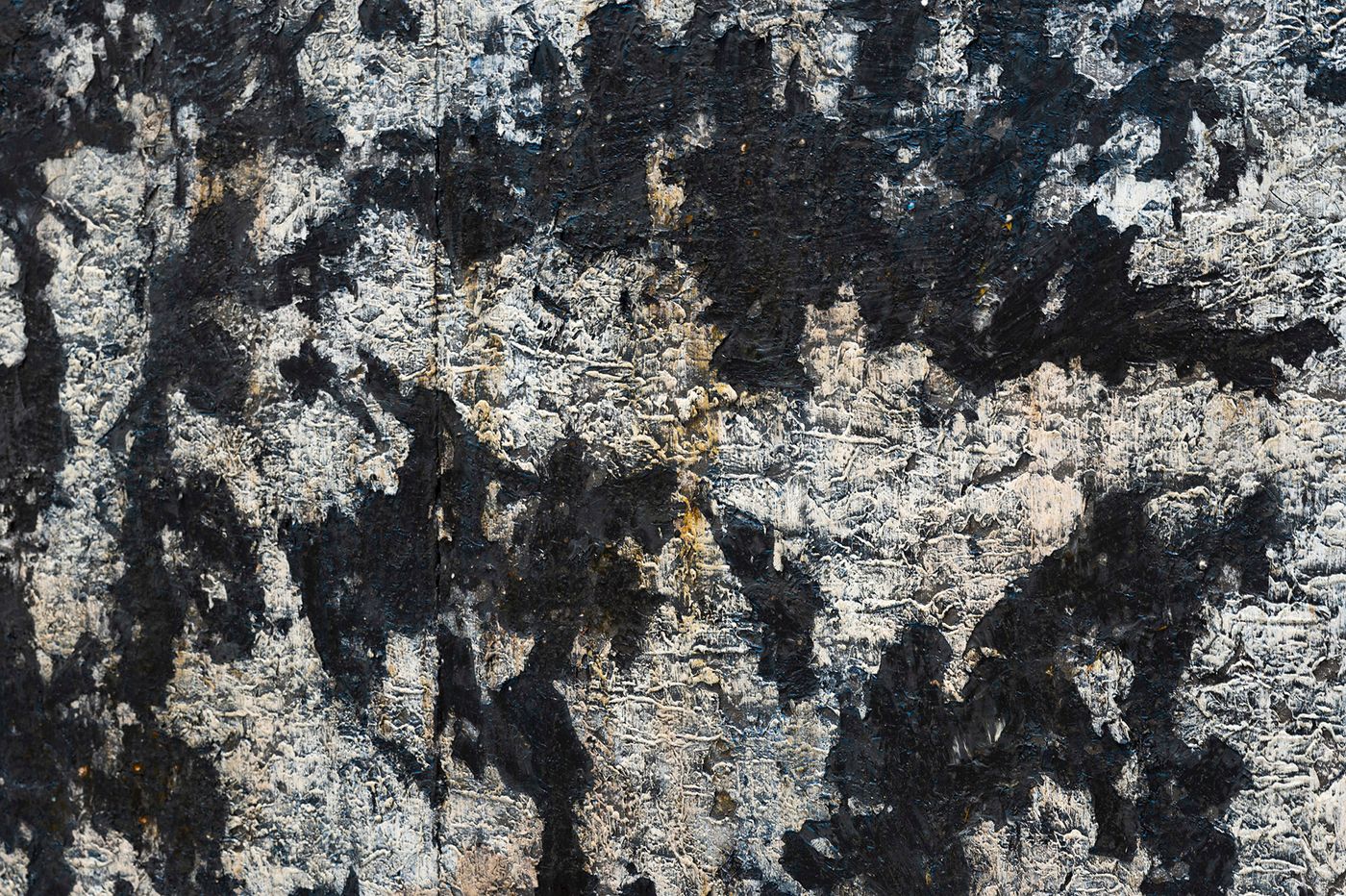
To the Cycles of Frost and Thaw (detail), 2021-2022. Oil, calcium carbonate, graphite, polymer, silver nitrate, and ferrous oxalate on canvas with steel frame; 217 x 97 in. Photo: Allison Minto.
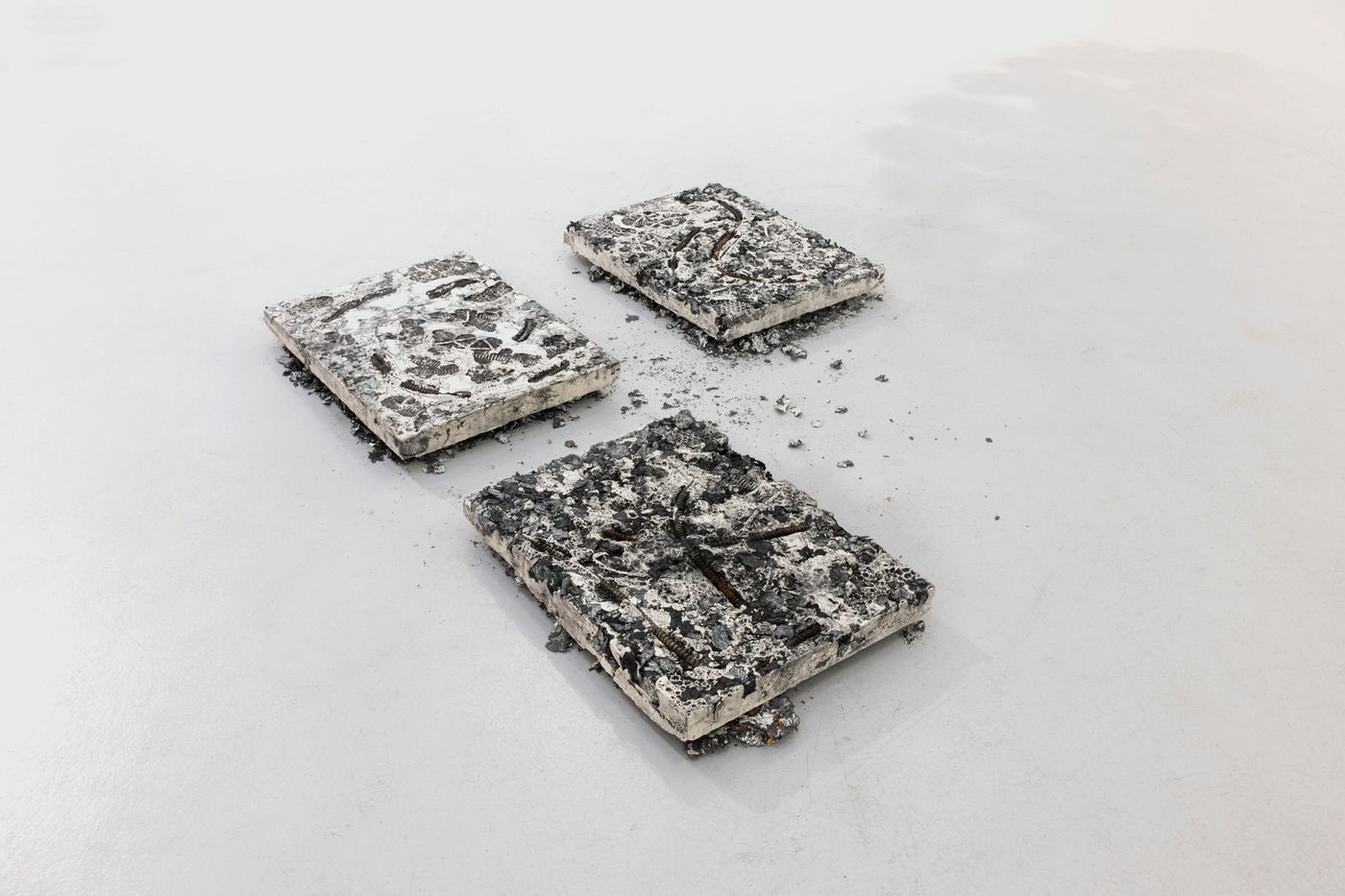
Fossil I, II, & III, 2022. Oil paint fragments, clay, steel, shells, hadrosaur fossils and graphite dust casted into plaster; each approximately 24 x 18 in. Photo: Allison Minto.
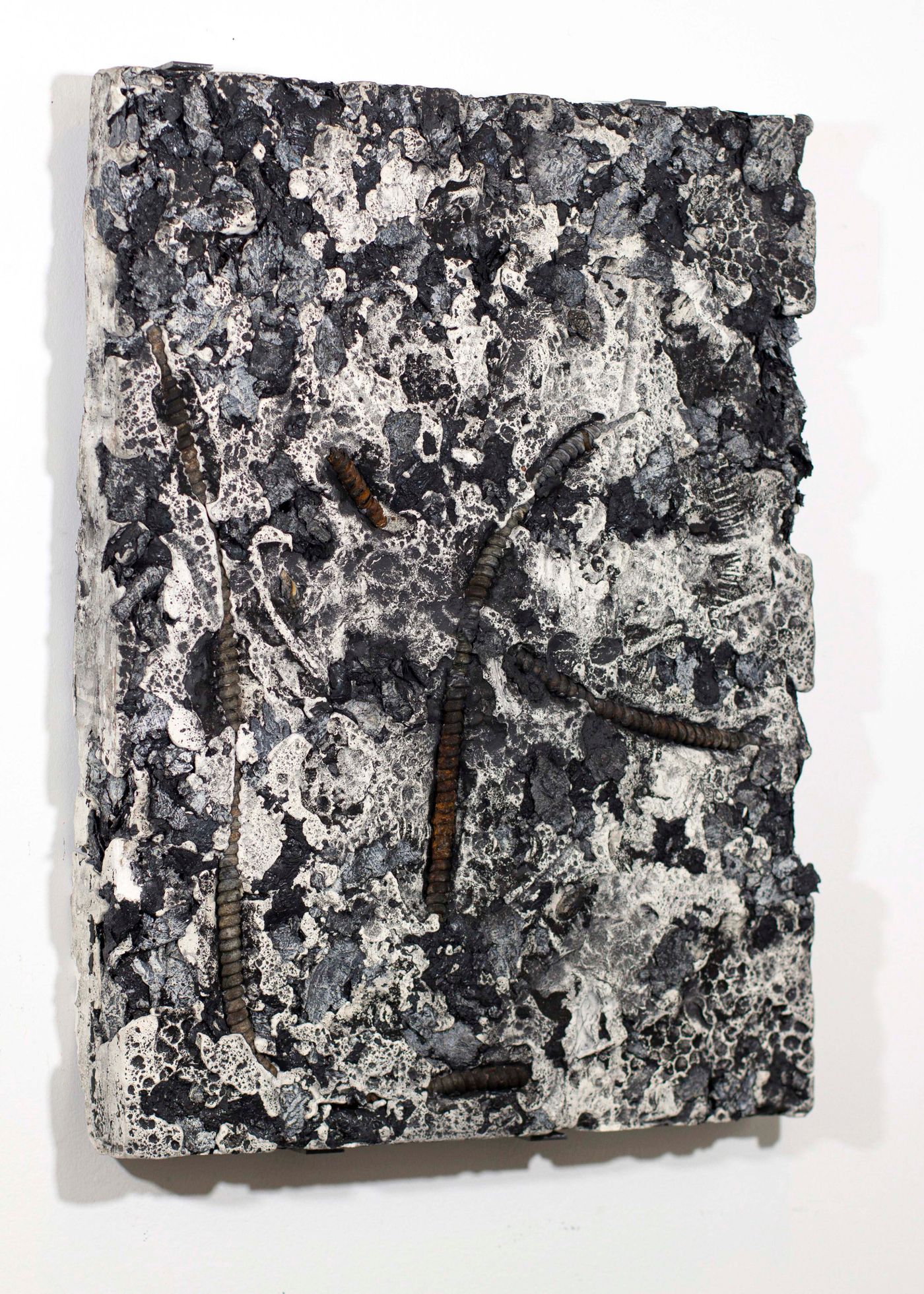
Fossil I, 2022. Oil paint fragments, clay, steel, shells, hadrosaur fossils and graphite dust casted into plaster; 24 x 18 in. Photo courtesy the artist.
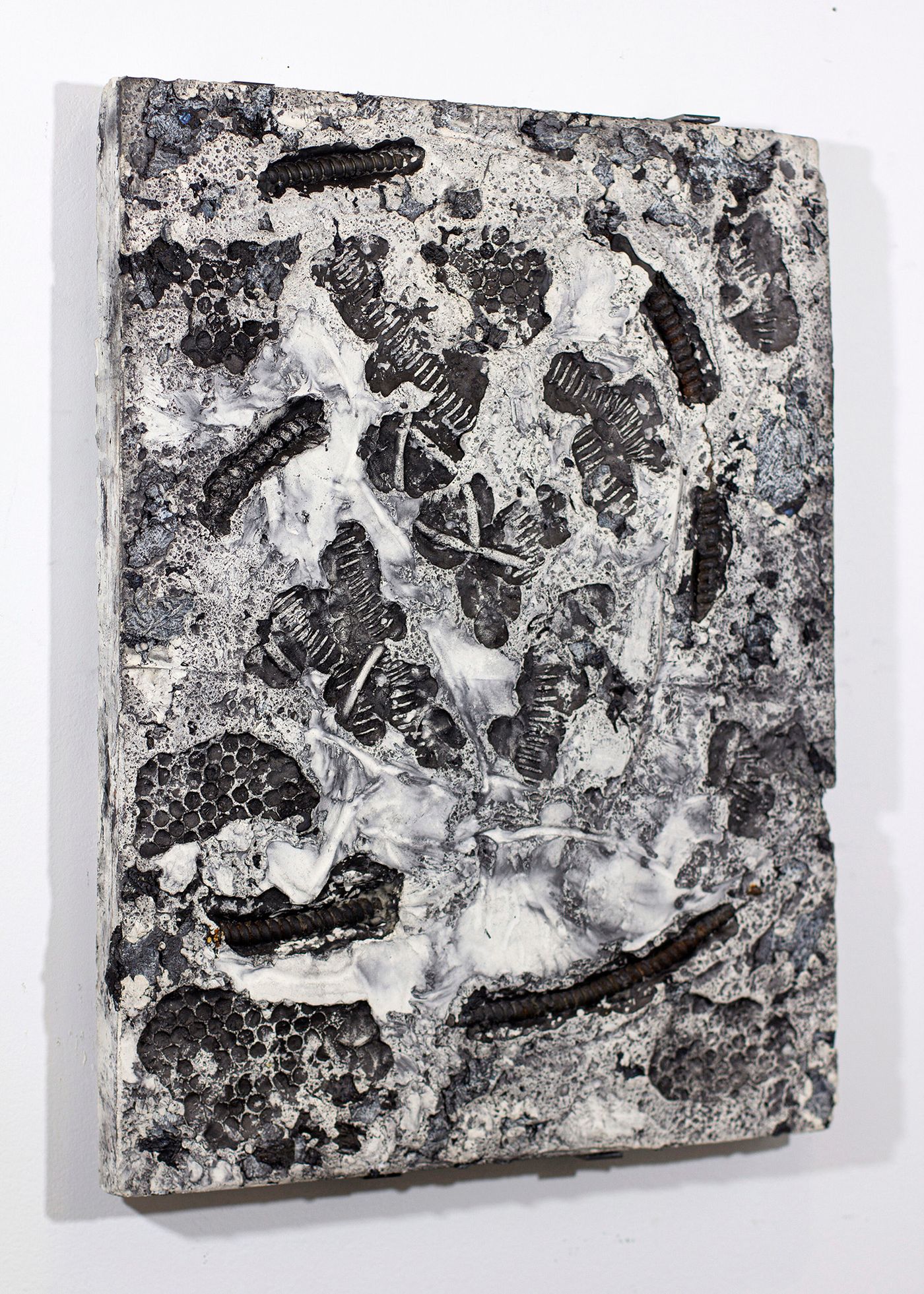
Fossil III, 2022. Oil paint fragments, clay, steel, shells, hadrosaur fossils and graphite dust casted into plaster; 24 x 18 in. Photo courtesy the artist.
Brennen Steines
b. 1993, Rockford, Illinois
How can a painting practice grapple with the Anthropocene? Many artists speculate on fictional futures, creating sci-fi horizons composed of crumbling buildings and flooded plains. I instead look at the ground beneath our feet. The soot, the soil, the concrete, and the stone bear witness to our actions in the here and now. My paintings echo the substrates of our collective footprint; resembling fossilized slabs that crackle with clairvoyance of the future by speaking in the weathered voice of the past.
My work registers the poetics of time through a process of additive and subtractive mark making. Layers of oil paint are added to the surface, left to dry, and then excavated; creating a geological sedimentation of pigment on the substrate. The paintings become visceral records of their own creation, resulting in topographical terrains that expose the traces of their own history. My practice thus becomes an act of excavation where past and present converge; an act of transmutation where duration and entropy become a way to understand the turbulent tectonics of the body and the earth.